- 07736 104738
- sam@medicalmassagelady.com
- Mon - Sat, 8:00 - 18:30
ANATOMY ,FUNCTION AND CAUSES OF INJURY
This series will focus on the hip flexor muscles and how to deal with injuries. The main two hip flexors are the iliacus, a deep flat muscle that lies between the pelvis and the thigh bone, and the psoas major, a deep,long muscle running from the lumbar vertebrae to the thigh bone. Both of these muscles flex and rotate the thigh. Other muscles that flex the hip are the rectus femoris ,(one of the quads)which is used in lunges and squats, and also the pectineus, (one of the adductors)which sits in the groin.
Functions of the Hip Flexors:-
• hip flexion, bring the thighs and abdomen towards each other either by lifting the knee or by bending the abdomen forward
• spinal stabilisation due to the attachment of the psoas to the lumbar vertebrae
Exercises that use the hip flexors:-
• CARDIO - walking uphill, climbing, running, stepper,cycling
• RESISTANCE – leg raises, sit ups and jack-knife, plank variations
• POWER – tuck jumps, front kicks
CAUSES OF INJURY :-
• Sudden movements – change of direction eg, in football, martial arts
• Falls
• Prolonged sitting – shortens and weakens the muscles
• Previous hip flexor injury
• Not warming up properly before exercise
• Overuse
• Overstretching
• Forced hyperextension of the hip
• Hamstring strains have been associated with hip flexor injuries
TYPES OF INJURY:-
GRADE I STRAIN (mild): mildly painful tear affecting some of the muscle fibres, causing mild swelling and tenderness. Regular activity can continue and full recovery in a couple weeks.
GRADE II STRAIN (moderate): A partial tear in the muscle causing moderate pain, limited movement, limping, swelling, and tenderness. Sport activity will stop due to up 50%loss of function. Recovery from a few weeks to a few months.
GRADE III STRAIN (severe): Complete muscle tear causing severe, swelling and inability to weight bear. Over 50% of your muscle function is lost. Surgery may be needed to repair the muscle, and recovery takes several months.
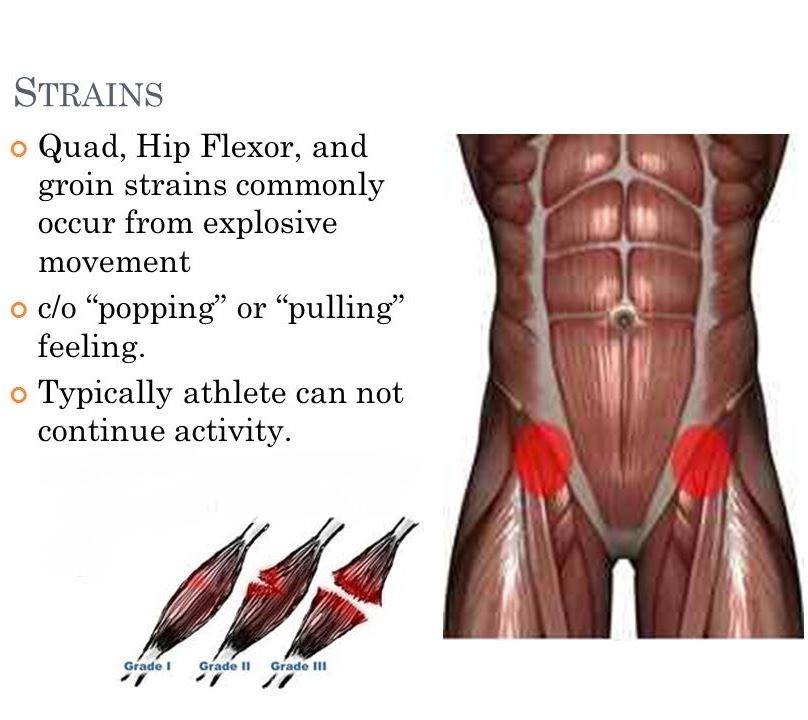
HYPERLORDOSIS : Hip flexors attach to the spine so if they’re tight they can cause an unnatural curve in the spine which affects how forces impact the spine. This can cause lower back pain, weak abdominal muscles, weak hamstrings, and tight low back muscles.
SNAPPING HIP SYNDROME: (see separate post) Tight hip flexors can also cause the pelvis to tilt forward which can also cause lower back pain. To counteract this, you must stretch the hip flexors and strengthen the abdominal muscles.
SYMPTOMS:-
• limited range of motion
• poor posture
• sudden, sharp pain at front of hip
• pulling sensation in front of groin (when rising from a squat)
• cramping and tenderness in upper thigh
• bruising to hip/thigh
• swelling to hip/thigh
• muscle spasms in hip or thigh (in grade III)
• difficulty walking (in grade III)
• inability to kick, jump, or sprint
• discomfort when moving, including limping
• stiffness after being stationary
TREATMENT:-
• Protect your injury from getting worse by using a brace
• Rest as much as possible for the first few days and avoid any activities that cause pain
• Use ice packs to relieve pain and reduce swelling in the muscles. Apply immediately after injury for 20 minutes and then every 3-4 hours for the next 2-3 days.
• Compression: If swelling is an issue wrap the injured area lightly with a bandage or wear compression shorts.
• Elevate your leg as much as possible reduce swelling and inflammation.
• Pain relief such as ibuprofen which also treats inflammation (take caution with history of heart disease, high blood pressure, kidney disease, asthma, ulcers or internal bleeding)
• See GP/physio if there is no improvement within a couple of weeks
• you may need to use crutches with a grade III rupture until you're healed
• surgery to reconnect the muscle in severe grade 3 tears (rare)
• trigger point therapy to relieve pain
PREVENTION:-
To prevent hip flexor injuries:-
• warm up before any exercise and cool down after
• strengthen your muscles by regularly stretching
• work on strengthening core muscles and glutes as they work together with the hip flexors to stabilise the hip Tightness in one of these muscles can cause injury in another ensure full recovery from injury before returning to usual workout routine
EXERCISES YOU CAN AND CAN’T DO WITH HIP FLEXOR INJURIES
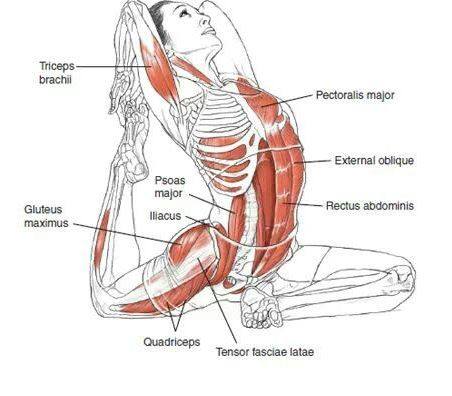
EXERCISES THAT WORK THE HIP FLEXORS INCLUDE:-
• Sit-ups • Leg raises • Hanging leg raises • Resisted hip flexion
EXERCISES TO AVOID WITH HIP FLEXOR INJURY OR PAIN:-
If you have hip pain, you may need to avoid certain exercises, and also reintroduce exercises gradually when starting after a recovery from injury.
CARDIOVASCULAR - you should avoid any exercise that subjects the hip joint to stress or repeated bending, eg. Running, jumping. step aerobics, rowing machines and cycling.
STRENGTHENING EXERCISES - avoid any exercises that subject the hip joint to stress or repeated bending eg. lunges & squats. Even some exercise machines that don’t specifically work the hips but still require bending may make pain worse.
CONTACT SPORTS – repetitive twisting and pivoting movements such as in golf, tennis, basketball and football can make a hip injury worse. Contact sports such as football, rugby, martial arts and wrestling should also be avoided due to the risk of the painful joint receiving a sudden impact.
STRETCHES – avoid any stretch that requires you to:-
• spread your legs wide
• bend forward
• lay on your side- may be painful if the hip bone presses into the floor
• bring the knee past hip level
• swing the leg across the body. Even with gentle exercise such as yoga you may need to adjust certain postures to avoid pain.
EXERCISES TO STRENGTHEN THE HIP FLEXORS AND PREVENT INJURY:-
• single leg squat – focuses on hip flexors but also engages the core and leg muscles(rectus femoris also flexes the hip)
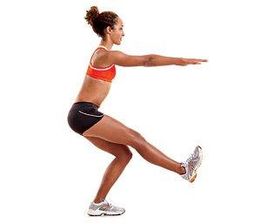
Seated butterfly stretch
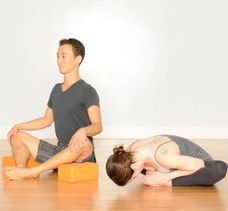
Pigeon yoga pose
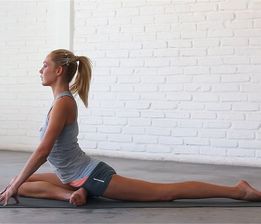
one legged pigeon yoga pose
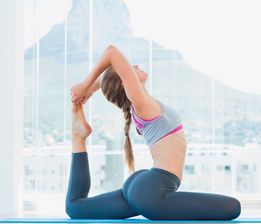
Bridge yoga pose
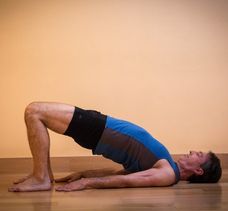
bow yoga pose
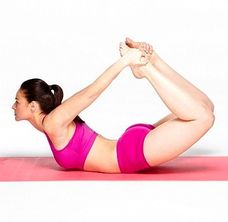
camel yoga pose
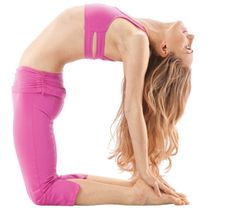
Cat yoga pose
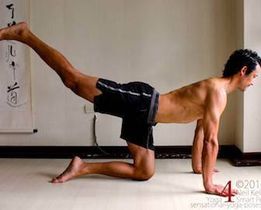
Cobra yoga pose
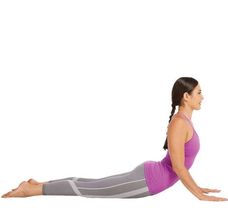
Lunges
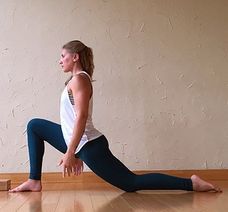
• Wall psoas hold
• Straight leg raises
When recovering from injury and reintroducing some exercise the best options would be swimming, water aerobics or walking on soft surfaces.If you’re used to strength training however,it is best to focus on upper body exercises that won’t place stress on the hip joints.




